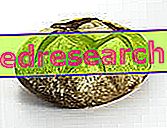Phytic acid as an antinutrient
Phytic acid is traditionally considered an anti-nutritional factor, that is, a substance capable of limiting the absorption or use of nutrients. In the specific case, by binding to them to form insoluble salts (phytates and phytin), phytic acid hinders the absorption of some minerals (calcium, iron, magnesium and zinc).

Reduce the Phytates in the Foods
The phytates are inactivated by heat and fermentation. Even prolonged soaking, a classic method to improve the digestibility of legumes, contributes to greatly reducing the concentrations of phytic acid in the food. As for the bread, slow sourdough leavening is able to reduce the content of these anti-nutritional factors, while brewer's yeast and industrial yeasts are not as effective, because they promote excessively rapid leavening. Even a good baking of the bread helps to eliminate the phytic acid present in the food.
Presence of phytates in cereals and other foods | ||
| Food | % dry weight | |
| Sesame | 5.4 | |
| Lima beans | 2.5 | |
| peanuts | 1.9 | |
| Cocoa powder | 1.9 | |
| Soy | 1.4 | |
| Corn | 1.1 | |
| Barley | 1.0 | |
| Rice | 0.9 | |
| Wheat | 0.9 | |
| Oats | 0.8 | |
Antioxidant properties
Among the many shadows also emerge some interesting properties, linked to the good antioxidant power of the phytates. These substances are in fact able to chelate iron, an element that, when present in excess, favors the production of the free hydroxyl radical (OH-), a chemical agent which is particularly dangerous for the body.



